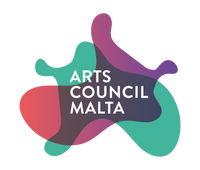NinuCremona
Biography
Ninu Cremona, affectionately known as Is-Sur Nin (Mr Nin), was born on the 27th of May 1880, in Victoria (Rabat), Gozo. After his father’s death when he was five, he moved to Tunisia to live with his uncle, where he attended the Christian Brothers’ School and later St. Charles College. In 1898 he returned to Malta and resumed his studies at the Gozo Seminary, where he met, and became friends with Malta’s national poet Dun Karm Psaila. Cremona wrote his first poem, ‘A Maria Vergine’ (‘To the VIrgin Mary’) in his last year of the seminary course. Two years later he was appointed a government clerk and later a sanitary inspector. In 1928, he became the editor responsible for all government translations and publications.
Jump to bibliography
Cremona’s role in establishing Maltese as a recognised language can hardly be underestimated. In 1936, he became the first Maltese teacher at the Lyceum and he also served as an examiner of Maltese at the Royal University of Malta. This was a very important step towards making Maltese a compulsory school subject. He co-founded the Għaqda Kittieba tal-Malti (Maltese Writers Society), later known as the Akkademja tal-Malti (Academy of Maltese). He was in charge of the Academy’s publication Il-Malti (‘Maltese’), published every three months.
Arguably, his most significant contribution was the 1924 publication Tagħrif fuq il-Kitba Maltija (‘Notes on Maltese Grammar’) where he, along with Ġanni Vassallo, laid the foundation for the Maltese alphabet and grammar. The new orthography was officially adopted by the government in 1934.
Cremona was a prolific writer in English, Italian and Maltese. He is renowned for his poetry, prose, drama, biographies and writings on philology and grammar. In 1936 he published Il-Fidwa tal-Bdiewa (‘The Farmers’ Liberation’), a drama following a classical Greek structure. It recounts the hardships endured by the Maltese under the rule of Aragonese nobleman Gonsalvo Monroy, who served as Count of Malta from 1421 to 1427 under King Alfonso of Aragon. The inhabitants revolted, expelled Monroy and undertook the significant task of repaying the sum Monroy had bought the islands for, a remarkable achievement given their poverty. Yet they ultimately succeeded.
Among his biographies, Mikiel Anton Vassalli u Żminijietu (‘Mikiel Anton Vassalli and his Times’, 1937) is particularly noteworthy. Cremona was deeply fascinated by the figure of Vassalli. In his poem, ‘Lil Mikiel Anton Vassalli’ (‘To Mikiel Anton Vassalli’), composed of two sonnets, Cremona laments how Vassalli’s efforts to establish Maltese as a language in its own right were being undermined by those who failed to appreciate his work. During Cremona’s era, when Malta was a British colony, the Maltese language was generally dismissed as lacking any significant cultural or intellectual value. Cremona, therefore, may have seen his own struggle to elevate the status of Maltese as mirroring that of Vassalli. He recognised the same resistance and indifference that Vassalli faced in his attempts to promote Maltese and this likely fueled Cremona’s determination to continue the fight.
Cremona passed away on the 4th of January 1972 at the age of 91.
Biography written by Noel Tanti
